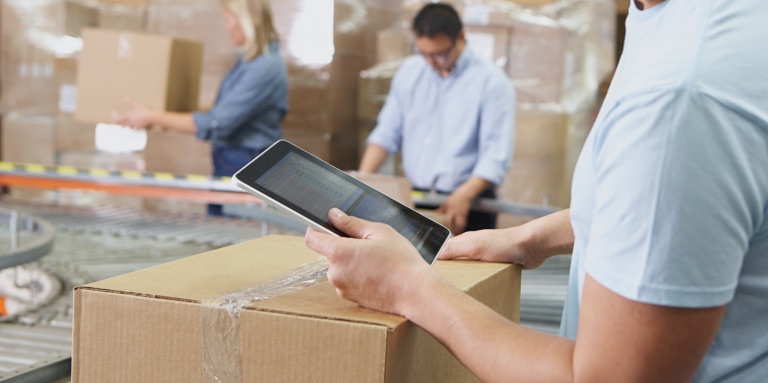How the Internet of Things (IoT) will impact the logistics industry
It’s no secret that technology is rapidly changing the logistics industry. But what ripple effects will the rise of the Internet of Things (IoT) have for this evolving industry?
When the Internet of Things (IoT) appears on TV news segments or in glossy magazines, it’s usually wearables such as health bands or internet-connected televisions and thermostats that get a mention.
The reality, however, is that the IoT has already had a huge impact on a wide range of industries, and it’s only going to be more disruptive in the future.
One industry that will see significant ripple effects is the logistics industry. In particular, the IoT will have a huge impact on how supply chain leaders access information and collaborate.
The IoT is not new for the logistics industry. FedEx introduced parcel tracking decades ago and its competitors scrambled to catch up.
Similarly, Walmart implemented pallet level RFID tags a decade or so ago. In 2007, executives announced that the technology had greatly reduced excess inventory in the retail behemoth’s warehouses and cut out-of-stock occurrences by almost a third.
Despite many supply chain organizations already being ahead of the curve when it comes to the IoT, it’s really just the beginning.
A recent report by technology research outfit Gartner, Internet of Things in Supply Chain: What’s Real Now?, predicts that the IoT will connect 25 billion devices by 2020 and this will “significantly alter how the supply chain operates.”
Enhance in-transit visibility
It’s now a given that a parcel can be tracked every step of its journey, from the moment it’s shipped to when it’s finally delivered into the hands of the consumer.
But in most cases, it’s still a matter of barcodes being scanned – usually by humans – as the item goes through various distribution points.
With the IoT, an RFID tag is placed on the parcel or pallet and the truck or van acts as the ‘reader’, eliminating the need for humans to do anything more than load the vehicle.
The delivery vehicle will then connect to the cloud and transmit the RFID-derived information and its location. And it won’t just be the vehicle’s position – temperature data will be available in real-time as well, except in very remote areas.
Warehouse and yard management
Warehouses, distribution centers and yards are a fundamental part of supply chains and supply chain companies.
As a result, efficiencies gained in these facilities translate directly to improvements in the bottom line.
With parcels, pallets and containers RFID-tagged and able to communicate with infrastructure – machine-to-machine sharing – warehouses will be able to track inventory, vehicles and equipment through the cloud.
Through translating physical location into digital data, organizations will be able to automate asset and location tracking.
Additionally, taking humans out of these physical spaces will reduce workplace health and safety risks.
By providing a 360-degree view of a facility, organizations will be able to reduce congestion, trailer moves, fuel usage and wasted time. And by connecting and working with the right import-export partner, organizations will be able do this across the globe.
Improving fleet management
When GPS and RFID-derived location data are combined with other sensor data and data from other nodes on the IoT network, such as other cars and trucks, the supply chain will become proactive, not reactive.
For example, trucks and vans will be informed of delays before the vehicle gets caught in a traffic jam, whether the delay is caused by bad weather or an accident.
In addition, supply chain operators are able to monitor vehicle and driver performance. Metrics such as a gearbox or engine running hot often indicate an impending failure, and by scheduling maintenance proactively, time-sapping breakdowns can be reduced.
Companies will also be able to tell which drivers are the most economical, both in terms of fuel usage and vehicle wear and tear. Education and training can then be used to bring other drivers up to the same level.
By being open to all the possibilities of the IoT, organizations will be able to identify inefficiencies in real-time, enabling them to constantly improve the effectiveness of their operations.
To find out more about where the logistics industry is heading, download our free white paper, The future of logistics: Five transformative trends.
